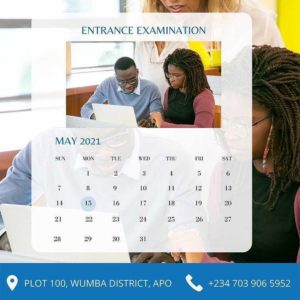As parents, we are familiar with our children’s preferences, dislikes, habits, and desires. Understanding their unique learning style can help us improve the way we teach children throughout their lives, allowing them to master their schoolwork and thrive in life. Gaining a better understanding of how our son or daughter learns and absorbs information will assist us help them be and achieve their best both inside and outside the classroom. Despite the fact that many people have a mix of learning styles, the majority of people have a favorite technique of learning. While each learning technique has advantages and disadvantages, we can see that there are several methods to learn and improve.
At Ladela School, we recognize that children learn in different ways, and we strive to educate in a way that is appropriate for them. We collaborate with you, the parents, to ensure your child’s success in reading and in life.
The three primary learning modes are auditory, visual, and kinesthetic. However, psychologist Howard Gardner’s theory of multiple intelligences encompasses eight additional learning styles in addition to basic learning styles. Here’s a quick rundown of each:
1. Visual:
These right brain learners have an easy time reading maps and graphs, so they excel at geometry, but they may struggle with numbers in general. They may struggle with reading and writing, but they are imaginative and learn from their surroundings. They may have trouble following oral instructions, but they are quite good at following written instructions.
Learning aids include diagrams, maps, charts, and infographics. To aid learning, highlight essential information in a book’s text.
2. Verbal:
These are the kind of students that receive knowledge best when it is spoken to them. They are exceptional in reading, writing, listening, speaking, and remembering what they have read. They excel at writing, speaking, and even rhyming.
Take good notes, look through exam results, create key phrases, and form mnemonics to assist youngsters retain and recall topics to improve learning retention.
3. Logical:
These are those that excel at mathematics and logical reasoning. They can quickly comprehend abstract information and evaluate cause and effect. They excel in games such as chess. They organize information well, generate well-organized lists, and build well-organized itineraries.
Learning hints: Rather than remembering the lessons, help these students grasp the principles underlying them. It will aid their learning if they establish precise objectives with rewards and track their progress toward those goals.
4. Auditory:
Musical students think in terms of sounds rather than visuals. Step-by-step techniques are the most effective for them. They are fluent in English and do well in oral tests. They are typically musically gifted and can recognize notes, rhythms, and tones.
Reading aloud, memorizing material, listening to music while studying, and participating in discussions (auditory) about the subject matter that they are learning will help these students succeed. To assist them remember new information, they use mnemonic devices, songs, and rhymes.
5. Interactional:
These students learn through engaging with others. They are good in groups and have a good grasp of other people’s emotions and facial expressions. They can pinpoint the source of communication issues in a group situation, and they prefer not to study in a closed environment.
Learning hints: These students gain from passing on what they’ve learned to others. Interviewing people to hear about their opinions might be beneficial. Volunteering and engaging in service-oriented organisations are areas where they may shine.
6. Intrapersonal:
These students prefer to work alone and employ self-study. They are very aware of their emotions, who they are, and what they excel in. They are self-sufficient and enjoy learning new things every day. They are good at self-management and self-reflection.
Learning hints: These students do best when they are able to study alone and in a peaceful environment. Journaling is beneficial to them. They must figure out how to link what they’ve learned with what they’re learning now.
7. Physical (Kinesthetic):
These students like moving about. They are generally athletically gifted, and walking while reading can help them learn more effectively.
Physical/kinesthetic learners will benefit from hands-on learning. Making their lessons into art projects can help them learn more effectively.
8. Naturalistic:
These students learn by connecting knowledge to natural patterns. They might become farmers or scientists when they grow up. They enjoy being outside and are fascinated by flora and animals.
Learning hints: Use nature to pique your interest in learning; recognize and categorize to improve your understanding.
Give your youngster all they require to succeed in life.
INTERNATIONAL FOUNDATION PROGRAMME
Level 3 International Foundation Diploma for Higher Education
The Level 3 International Foundation Diploma for Higher Education Studies is a nine-month, pre-university qualification accredited by NCC Education, a leading UK awarding organisation in IT and Business.
Many UK universities recognise the Level 3 International Diploma for Higher Education Studies as an entry qualification to BA, BSc or BEng degree courses. You can also apply to universities in the USA, Canada, Ireland and Australia.



